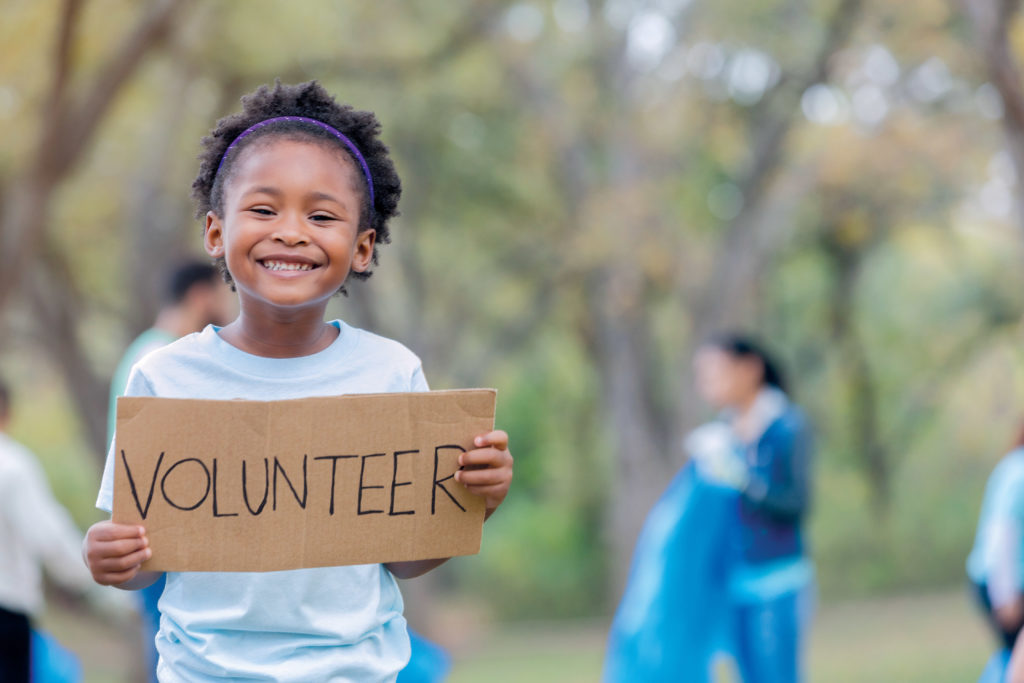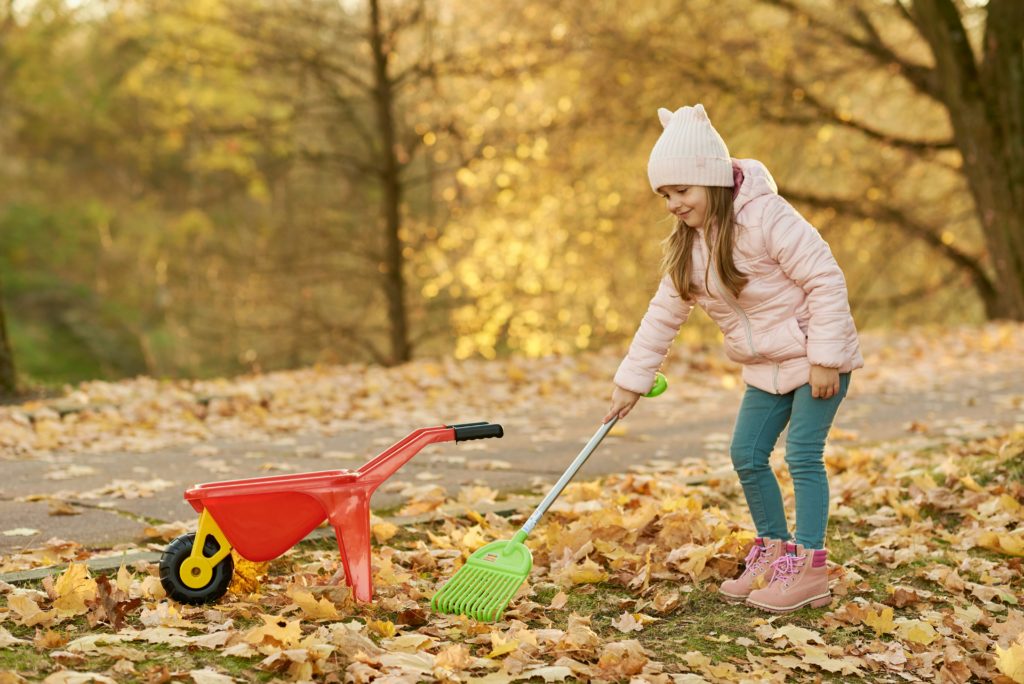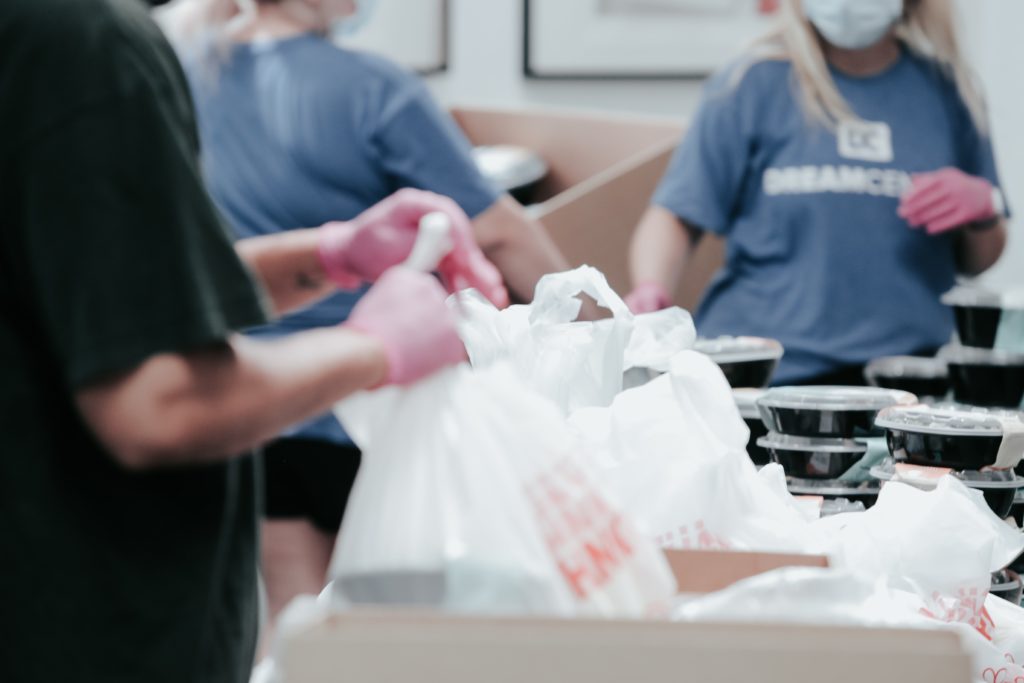
In a year that has seemed to drag on endlessly—thanks, coronavirus!—the holidays have managed to sneak up on us once again. In the midst of all the decorating, shopping, wrapping presents and other holiday activities, many families may be thinking about ways to give back. While the idea is to help others, research has shown that community service offers an array of benefits for the young volunteers themselves.
“When kids start volunteering early, it can often lead to a lifelong passion for making the world a better place,” says Laura Plato, chief solutions officer of VolunteerMatch, an organization that connects people with volunteer opportunities. “It also instills a sense of empathy, interconnectedness and understanding that we are not alone out there.”
In fact, AmeriCorps, the federal agency that connects individuals with service opportunities, has found that children who volunteer are three times more likely to volunteer as adults. And young people who volunteer are also half as likely to abuse drugs and alcohol, smoke cigarettes or engage in destructive behavior.
Additionally, volunteering can help kids build critical skills that will benefit them later in the workforce. “It helps to increase communication skills, teamwork and leadership skills,” says Genisha Metcalf, head of campaigns for Do Something, the largest nonprofit for youth looking to make a difference online and offline.
Experts say that volunteerism is even more important for children during the pandemic. “Volunteering can give kids a real sense of control and responsibility and help them feel empowered,” says Plato. “It’s active, and it’s something they can feel in charge of.”
If you’re worried about volunteering during COVID-19, you can find plenty of opportunities to do so safely. More and more nonprofits have developed virtual volunteering opportunities and have adapted their programs, such as offering drive-through donation drop-offs.
“Many organizations have done a great job of adhering to the Centers for Disease Control (CDC) health guidelines,” says Plato. “They’re following mask-wearing and handwashing guidelines. They’re safely distancing inside their facilities.” Be sure to ask an organization about their safety measures before volunteering.

With so much taking kids’ attention—school, activities, friends and screens—how can parents get them excited and motivated to volunteer?
Make it age appropriate
Although some organizations require children to be a specific age to volunteer—13 or older, for example—even the youngest of kids can give back. “Kids are never too young to start,” says Plato of VolunteerMatch. “The key is putting them into the right activity for their age.”
Very young kids can make cards to mail to troops or to nursing home residents. Older kids can rake leaves or shovel snow for seniors in their neighborhood. Teens can mentor younger children or help them with homework.
Model benevolent behavior
Kids love to copy their parents and older siblings. If they see you volunteering, they’ll be more likely to want to do so as well. According to AmeriCorps, a child whose family volunteers is nearly two times more likely to volunteer, so make volunteering a family affair. “Show your kids how excited you are to give back,” says Plato.
Pick a cause they care about
Talk to your kids about who or what they are most interested in helping. Then find opportunities that focus on these causes. Is your child concerned about the environment? Pick up trash at a local beach. Is your son or daughter an animal lover? Make dog biscuits or blankets for a local shelter. Kids will be more enthusiastic about giving back if they’re contributing to a cause they care about.

Incorporate giving back into your family’s routine
Figure out how much time your family can commit to volunteering, whether it’s once a week or every year on Thanksgiving. Then add it to your family’s calendar like you would other appointments. “Get your kids thinking about volunteerism as a part of their regular lives the same way they think about school, sports and other activities,” says Metcalf of Do Something.
If it seems impossible to fit volunteering into your family’s already packed schedule, Plato suggests working it in around activities that you’re already doing. If you and your child are at the grocery store, pick up some additional items for your local food pantry. If your child is using birthday money to buy a toy online, have your son or daughter pick an additional toy to donate to a needy child.
Reinvent the playdate
Volunteering together is a great way for kids to have fun with their friends while also keeping a safe distance. Meet up with a few other families at a local park to pick up trash, then let the kids run around afterward. Invite your kids’ friends over to help pack backpacks with school supply donations and order pizza as a reward. The kids will have so much fun that they’ll likely ask when they can do it again!
Let them see their impact
Activities that allow kids to see the difference they are making are always motivating. Through Dec. 7, you can sign up to adopt a military family for the holidays at soldiersangels.org. Your child can help shop for and wrap presents for the family’s children and maybe meet them in person. Or, foster a pet at home for a few weeks or months. Contact your local animal shelter or pet rescue to see how you can sign up.
Whatever you decide to do, Plato says, the key is to make it fun. “Just like with anything you want to teach your kids to do, instilling fun, joy and play into it is a way to get them excited,” she says. “Don’t make it feel like work—none of us needs any more work to do!”
A version of this story originally appeared in the November 2020 issue of Washington FAMILY.







